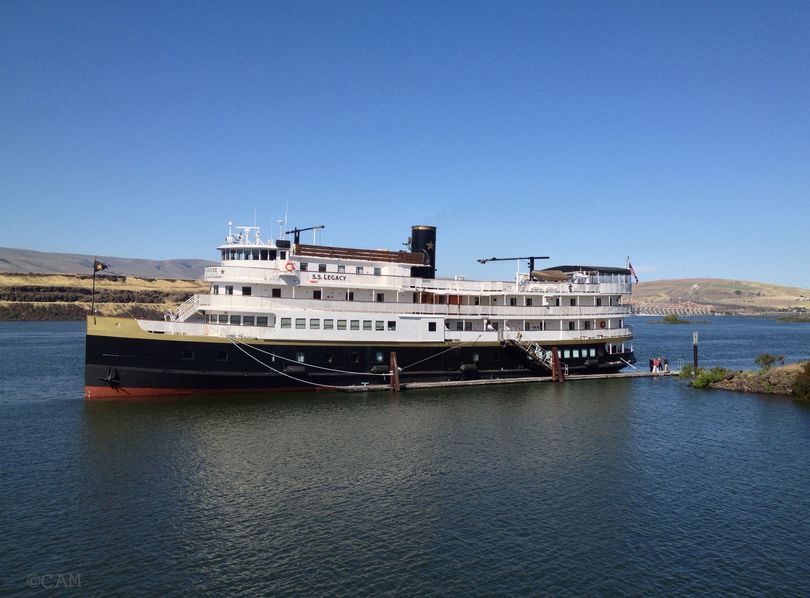Travel: Riverboat Cruise Brings Columbia River History to Life

For history lovers, like me, there is something deeply important about following the footsteps of the men and women who came before us. That’s often what compels us to travel, to put ourselves in the place where important things--significant events that shaped the world we live in now--happened.
Here in the Northwest we are especially fortunate. With vast undeveloped stretches of plains and prairies, dense forests and ranges of jagged mountains, much of the landscape is no different that it was when the first explorers moved into the area. Here, you can step into a landscape that, in places, has changed very little since the first people, and later the first explorers, arrived.
That’s why I boarded Un-Cruise Adventures S. S. Legacy in Portland for a small-ship heritage voyage up the Columbia and Snake rivers. This was a bucket-list trip for me. I’ve driven along the Columbia, taken the train through the gorge, flown over it by plane and helicopter. But I’d never explored the area the way it was originally done: by river.
It’s hard to imagine the Columbia River, although known and deeply important to Native Americans, was not discovered until the 1700s. and it was almost another century before a fur trader by the name of Robert Gray first sailed into it and named the fierce river for his ship—the Columbia Rediviva. And that it was still a mystery when Thomas Jefferson commissioned Lewis and Clark and the Corps of Discovery in 1804.
From the moment we boarded the replica coastal cruiser, before we even cruised out of Portland and the greenness of the Pacific Northwest, we were steeped in history. We were met by costumed guides and interpreters and they continued to bring to life the stories of the men and women who settled the area as we moved upriver.
At the first dam, the Bonneville Dam (there would be seven more locks and dams on the journey) we are still surrounded by forest and miles of fertile land rising up to meet mountains that look like giant thorns piercing the low clouds. We leave the ship to tour the dam and fish ladders.
At The Dalles, the end of the Oregon Trail, things began to change. We entered the high desert that covers so much of central and south-central Oregon and Washington. Green gives way to gold.
My husband and I spent hours on the top deck, taking it all in, watching freight trains wind along tracks beside the swift, opaque green water of the river, long ribbons of cargo shuttling goods between ports and cities. The sun was high and hot in an endless blue sky laced with contrails and dotted with fat white clouds.
Each day we saw more and learned more. We read books from the ship’s library and listened as our guides put human faces on the stories of settling of the West, the area’s importance in wars and commerce.
We ate well, gathering for gourmet meals, and socialized well, gathering again for cocktails. We made friends and shared stories with the other passengers, many of whom have led fascinating lives.
We rode jet boats up the Snake River, deep in the gorge that still bears the evidence of the geological turbulence that created it.
We visited Walla Walla, the small city that was once considered the “Paris of the West” delving into the personal stories of the men and women who lived, loved and died there. We tasted the sweet onions that put Walla Walla on the map and the outstanding wines that have reinvented the area and put the wine world on notice.
We climbed the Astoria Column for a spectacular view and visited Fort Clatsop, where Lewis and Clark rode out a stretch of bad weather so miserable it became part of the history of the area.
By the time we’d made the round trip back to Portland--back through the series of locks and dams--like Lewis and Clark, we’d made a journey of discovery.
We live in the Northwest but walking down the gangplank, heading back home, we knew much more about this beautiful part of the country than we did when we’d set out. We’d seen familiar territory with a new view, from the deck of the beautiful ship that carried us, and we’d followed the footsteps of the first people and the wagon trails of those who paved the roads and opened the doors to let us follow.
Cheryl-Anne Millsap’s audio essays can be heard on Spokane Public Radio and on public radio stations across the U.S. She is the author of “Home Planet: A Life in Four Seasons” and can be reached at catmillsap@gmail.com